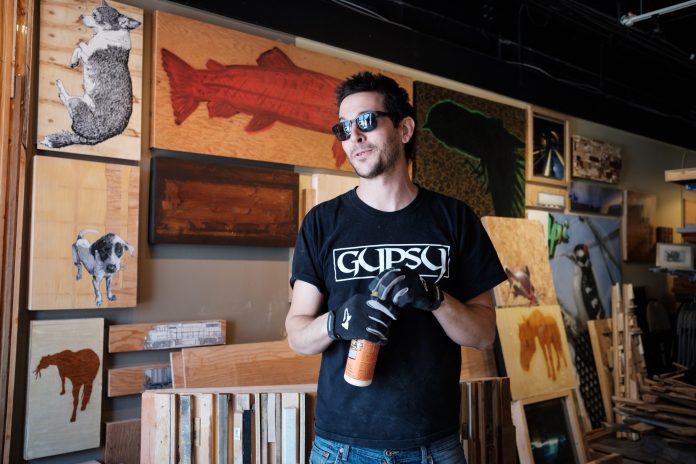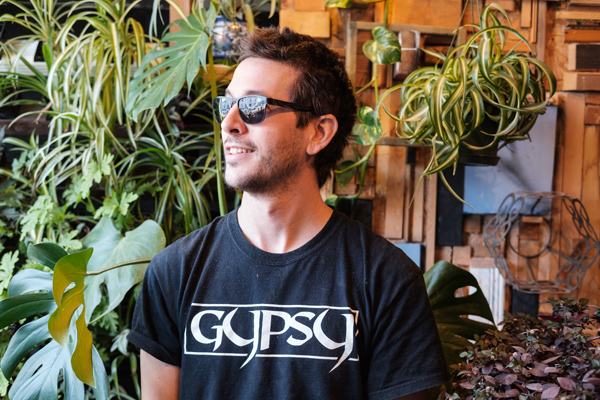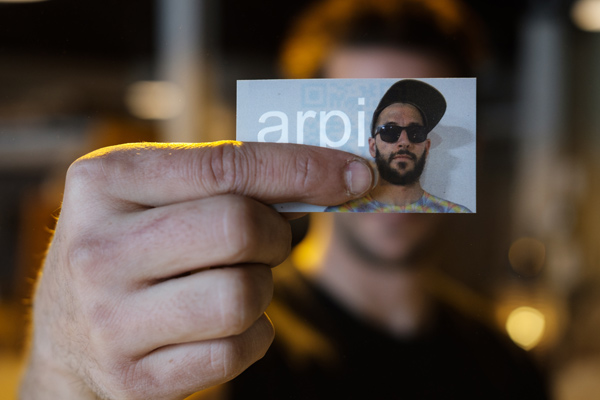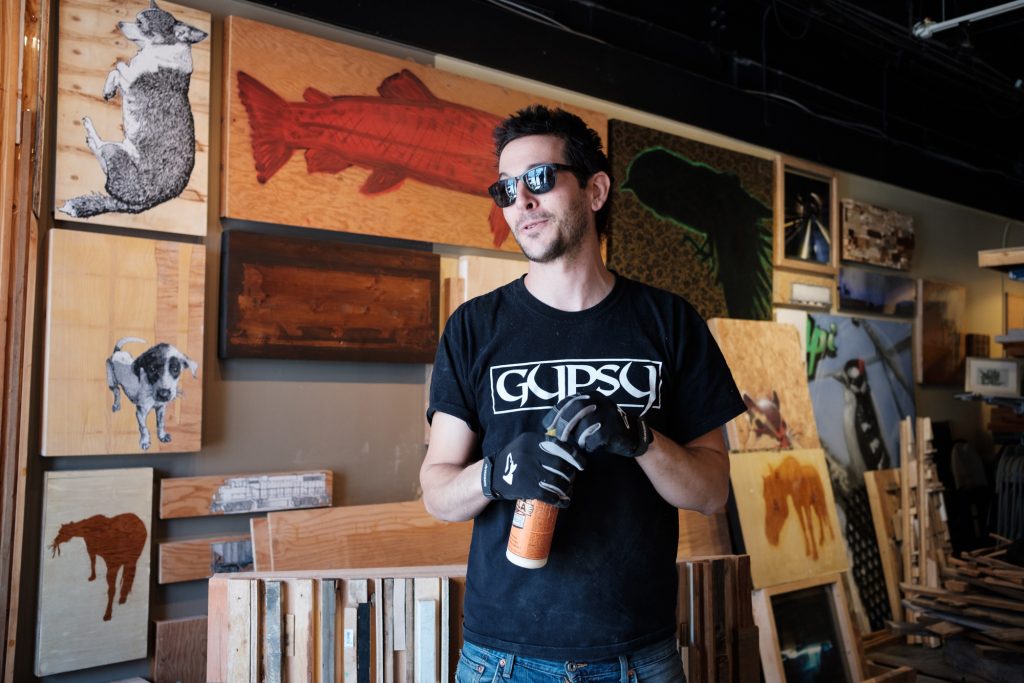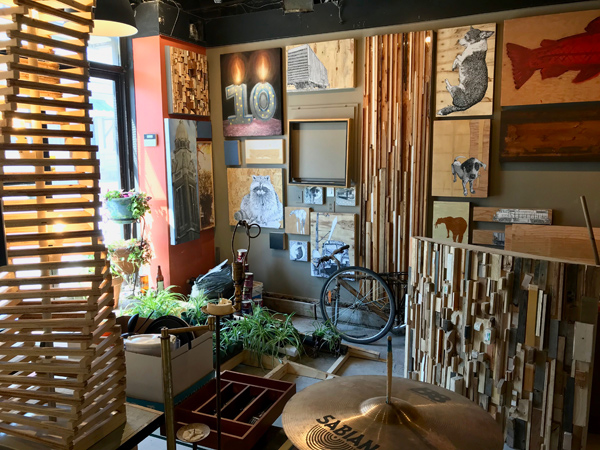By Andrea Tomkins –
If you crave deep conversations about art, society, the environment, big business, or all of the above, pop your head into 7A Hamilton Ave. A simple plywood sign with the word ART and an arrow points the way to what will certainly be an invigorating exchange of ideas.
Local artist, Arpi, has set up what he calls his “nest” in the former location of LOAM Clay Studio. In between projects he’s fixing up the place – even though it’s meant to be a short-term tenancy – and bringing it back to life.
A Montreal transplant, Arpi is known for his murals in Kitchissippi and beyond. They include a large composition over the entrance of Railbender Tattoo Studio on Armstrong, and on that same building, two finches adorn the wall of the former location of the Orange Art Gallery. Other murals add a splash of colour to Lowrey Street near Garland, and another near Maker House on Wellington Street West.
One of his biggest passions involves the reuse of found materials. He just got his drivers license this year, after 30-plus years of being a pedestrian. “When you’re driving, you’re looking at the road,” describes Arpi. “When you’re walking, you’re looking at everything else.” And of course, you find stuff. Like a modern day magpie, Arpi’s nest is stuffed with projects in various degrees of completion and the materials come from within a 500m radius. These may be locally sourced discards, but as Arpi explains, they are also well travelled: raw wood from B.C., shipped to China to make furniture for a big box store, and then back again, only to be thrown away after its life as cheap furniture is over.
“It makes me appreciate the true value of things,” says Arpi, who did a stint as a tree planter and has seen first hand the devastating effects of clear cutting.
It was while he was building frames for his canvases that he realized the scraps could be reused in a creative way.
“I found [the offcuts] really visually stimulating because of the echoes of all of the energy I put into it,” he describes. “Not just from me, but before… when it was in someone’s living room.”
Those scraps became the basis of a different kind of wall art. The name he’s given to this “wood fractal art” is “Neighbourwood: wood from the ‘hood.”
Birds and nature feature heavily in much of Arpi’s art, but these themes intersect even more in walls that span entirely from floor to ceiling. Those plywood offcuts and scraps of wood create a heavily textured surface punctuated with living plants. He invites visitors to smell the leaves of a lemon-scented geranium, touch the fern, and admire the shades of green of a spider plant.
Arpi enjoys working in these large formats and has two wooden wall installations under his belt: one at Loam and another at Beyond the Pale at the City Centre. Making art accessible to the masses is a major driver behind his work. “Considering the impact it has on a community, [murals] are such an incredible medium,” says Arpi. “Mural art, to me, is much more appealing because there’s no ownership,” he says. He feels keenly that this kind of art transcends barriers. “I love murals because you can basically transform a wall – which is a limitation, a kind of frontier – into a window to a universe of infinite imagination.”
He sees the role of the artist something akin to a public servant. It’s an interesting perspective, especially in the nation’s capital. “Beautification is in everyone’s best interest, and it’s also everyone’s duty,” says Arpi. “If everyone does their bit and makes their neighbourhood better, it’s so much better for everyone.”
“Beautification is in everyone’s best interest, and it’s also everyone’s duty,” says Arpi. “If everyone does their bit and makes their neighbourhood better, it’s so much better for everyone.”
